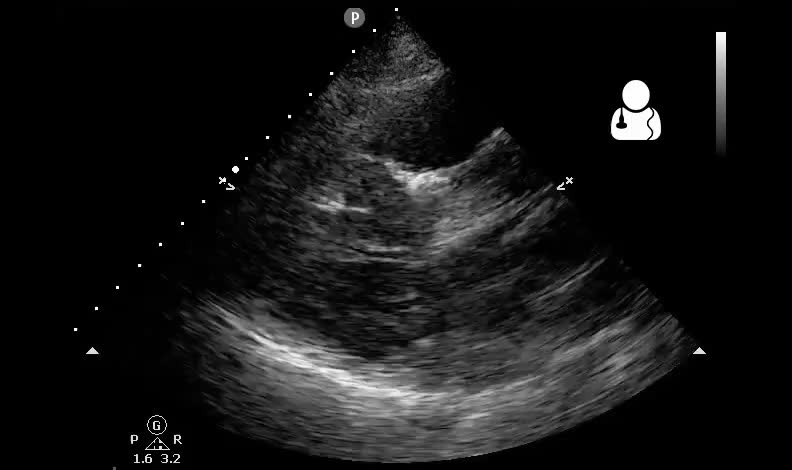The patient is a 42 y/o male who suddenly collapsed while running. Per EMS: Patient noted to be pulseless, asystole on monitor. ACLS was initiated, the patient was RSI’d. CPR is in progress upon arrival. Airway is intact. No pulse on initial check, and you obtain this monitor strip:

You also obtain the following echocardiogram during this pulse check.
What is the treatment?

Answer: Fine Ventricular Fibrillation (VF), defibrillate
This bedside echocardiogram demonstrates subtle disorganized cardiac twitching consistent with ventricular fibrillation.
- It can be difficult to differentiate fine ventricular fibrillation from asystole during CPR pulse checks.1
- A delay in the diagnosis of ventricular fibrillation decreases the likelihood of successful defibrillation and return of spontaneous circulation (ROSC).2
- On the other hand, unnecessarily shocking a patient in asystole will not improve that patient’s chance of ROSC and could delay standard therapy: effective chest compression with minimal pauses.
- Compare and contrast the above clip of VF to this one of asystole and cardiac standstill:
- The easiest way to differentiate these echocardiograms is to zero in on the mitral valve to look for any disorganized fluttering.
- Stewart JA. The prohibition on shocking apparent asystole: a history and critique of the argument. Am J Emerg Med. 2008;26:(5)618-22. [pubmed]
- Herlitz J, Bång A, Holmberg M, Axelsson A, Lindkvist J, Holmberg S. Rhythm changes during resuscitation from ventricular fibrillation in relation to delay until defibrillation, number of shocks delivered and survival. Resuscitation. 1997;34:(1)17-22. [pubmed]



